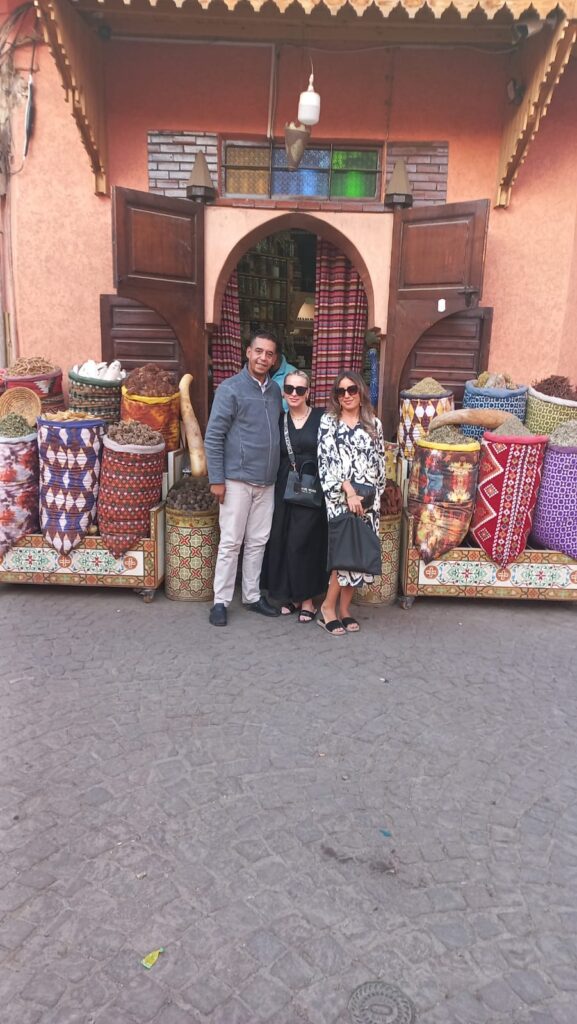Marrakech, a city where history, culture, and tradition blend seamlessly with modernity, offers an experience like no other. Known as the “Red City” for its iconic terracotta buildings, Marrakech is a destination that captivates the senses. From its labyrinthine Medina filled with bustling souks to its serene gardens and stunning palaces, the city is a living testament to Morocco’s rich and diverse heritage.
As you wander through its ancient streets, you’ll find yourself transported to a world where the past and present coexist harmoniously. The vibrant sounds of Gnawa music, the tantalizing aroma of traditional Moroccan cuisine, and the intricate craftsmanship displayed in every corner of the city will leave you enchanted.
Marrakech is not just a place to visit; it’s a place to experience—a city that invites you to immerse yourself in its unique culture, meet its warm and welcoming people, and discover the timeless beauty that has made it one of the most beloved destinations in the world.



History of Marrakech
Marrakech, often called the “Red City” because of the red sandstone used in its architecture, was founded in 1070 by the Almoravid dynasty under the leadership of Abu Bakr ibn Umar. The city quickly became a cultural, religious, and trading center, bridging the Saharan trade routes with the Mediterranean and European markets. The Almoravids built many of the city’s iconic structures, including the Koutoubia Mosque and the city’s original walls.
In the 12th century, the Almohad dynasty overthrew the Almoravids and took control of Marrakech. They continued to develop the city, expanding its infrastructure and fortifying it further. The Almohads also established the Menara Gardens and the Kasbah, significantly contributing to the city’s cultural and intellectual life.
Marrakech continued to thrive under successive dynasties, including the Saadians in the 16th century, who enriched the city with beautiful palaces, mosques, and the famous Saadian Tombs. The city also served as the capital of the Saadian sultanate. However, Marrakech’s importance as a political center fluctuated over the centuries, particularly as the capital moved to Fez and Rabat.
In the modern era, Marrakech has experienced significant growth and development, especially after Morocco gained independence from French colonial rule in 1956. Today, it remains one of Morocco’s most important cities, blending its rich history with a dynamic, modern culture.
Culture of Marrakech
Marrakech is a vibrant cultural hub that reflects the diverse influences of its history. The city’s culture is a mix of Berber, Arab, and Andalusian traditions, with a strong emphasis on music, art, and architecture. The Medina, a UNESCO World Heritage Site, is a testament to the city’s cultural heritage, with its narrow, winding streets, bustling souks, and historic monuments.
One of the most significant aspects of Marrakech’s culture is its music. The city is known for its Gnawa music, which has its roots in West African spiritual traditions. Marrakech is also home to the annual Marrakech Popular Arts Festival, which showcases traditional Moroccan music, dance, and theater.
Art and craftsmanship are integral to Marrakech’s identity. The city’s artisans are renowned for their work in pottery, leather, textiles, and metalwork, which are sold in the vibrant souks of the Medina. Marrakech is also home to several art galleries and museums, such as the Marrakech Museum and the Yves Saint Laurent Museum, which celebrate both traditional and contemporary Moroccan art.
The city’s culinary culture is equally rich, with a cuisine that reflects the diverse influences that have shaped Marrakech over the centuries. Traditional Moroccan dishes like tagine, couscous, and pastilla are staples, and the city is famous for its street food, particularly in the bustling Jemaa el-Fnaa square.
People of Marrakech
The people of Marrakech, known as Marrakchis, are known for their hospitality, warmth, and pride in their cultural heritage. The population is a mix of Berber, Arab, and Saharan peoples, reflecting the city’s historical role as a crossroads of cultures and trade routes.
The Berbers, the indigenous people of Morocco, have a significant presence in Marrakech. They have contributed greatly to the city’s cultural and linguistic landscape, particularly through their traditions, music, and craftsmanship. Arabic is the official language, but Berber languages (Tamazight) are also widely spoken, and French remains a common second language due to Morocco’s colonial past.
Marrakech is also a cosmopolitan city that attracts people from all over the world. This international influence is particularly evident in the city’s growing expatriate community and the influx of tourists, who are drawn to Marrakech’s unique blend of history, culture, and modern amenities.
Despite the changes brought by modernization and globalization, the people of Marrakech have maintained a strong connection to their traditions. Family and community are central to life in Marrakech, and the city’s residents take great pride in their city’s rich heritage, welcoming visitors with open arms while preserving the cultural practices that make Marrakech unique.
Conclusion:
Whether you’re interested in history, a culture enthusiast, or simply in search of a new adventure, Marrakech has something to offer everyone. Its rich tapestry of history, culture, and people is sure to leave an indelible mark on your heart. So, pack your bags and get ready to explore the magic of Marrakech—a city that promises not only to meet your expectations but to exceed them in every way.
